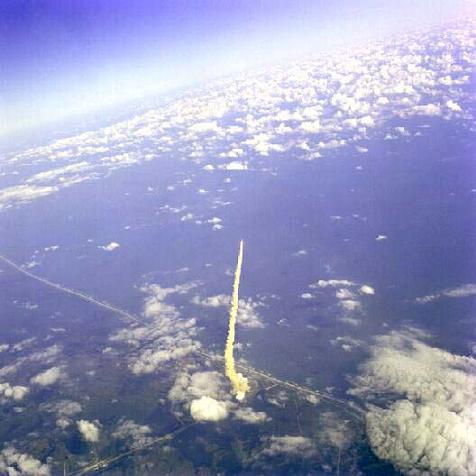On Saturday, September 13, scientists gathered in Santa Fe who were working on plans to build an elevator to space in the Pacific Ocean * The estimate: 7 billion dollars will be required to build the project
Avi Blizovsky

The appearance of a rocket - the space elevator will be boring next to it
Direct link to this page: https://www.hayadan.org.il/stairwaystohaven1.html
If climbing the stairs to heaven might sound like hard work, a conference attended by 70 scientists that opened in Santa Fe last Saturday offers hope for a lazier way to get to space. During two days of discussions, the scientists sought to turn into reality an ambitious idea that has been circulating for at least a century: the development of an elevator to space that would raise satellites, spacecraft and even people to a height of thousands of kilometers on a vertical rail.
The idea captured the science fiction writer Arthur C. Clarke who described it in his 1979 book The Fountains of Paradise. The scientists say that it is no longer pure science fiction.
NASA is currently investing millions of dollars in the project. In the center of the space elevator will stand a cable XNUMX kilometers long from the surface of the earth. The Earth side will contain a base station, almost certainly in the center of the Pacific Ocean. The other side will be anchored to a spacecraft that will be used to balance the weight, momentum that will keep the cable taut and allow vehicles to climb up and down the cable.
Brad Edwards, a space scientist who has been developing the space elevator idea for years, said that a lot of skepticism needs to be overcome. "At first people look at me as if I'm trying to work on them," he said. He estimates that it will take $7 billion to make the idea a reality and he hopes to have a finished elevator plan by next year. He said the floating base platform should be located hundreds of kilometers from runways and shipping lines and in an area of the sea where storms, lightning and high waves are rare.
One problem is expected to cloud the project in terms of public imagination. "When we start launching it's going to be kind of boring," said Edwards. "There is no smoke, there will be no trails of fire and no deafening noise. There will be a cell that will slowly ascend into space.
Concentration of space scientists
For news on the Google news site
https://www.hayadan.org.il/BuildaGate4/general2/data_card.php?Cat=~~~635461423~~~9&SiteName=hayadan
